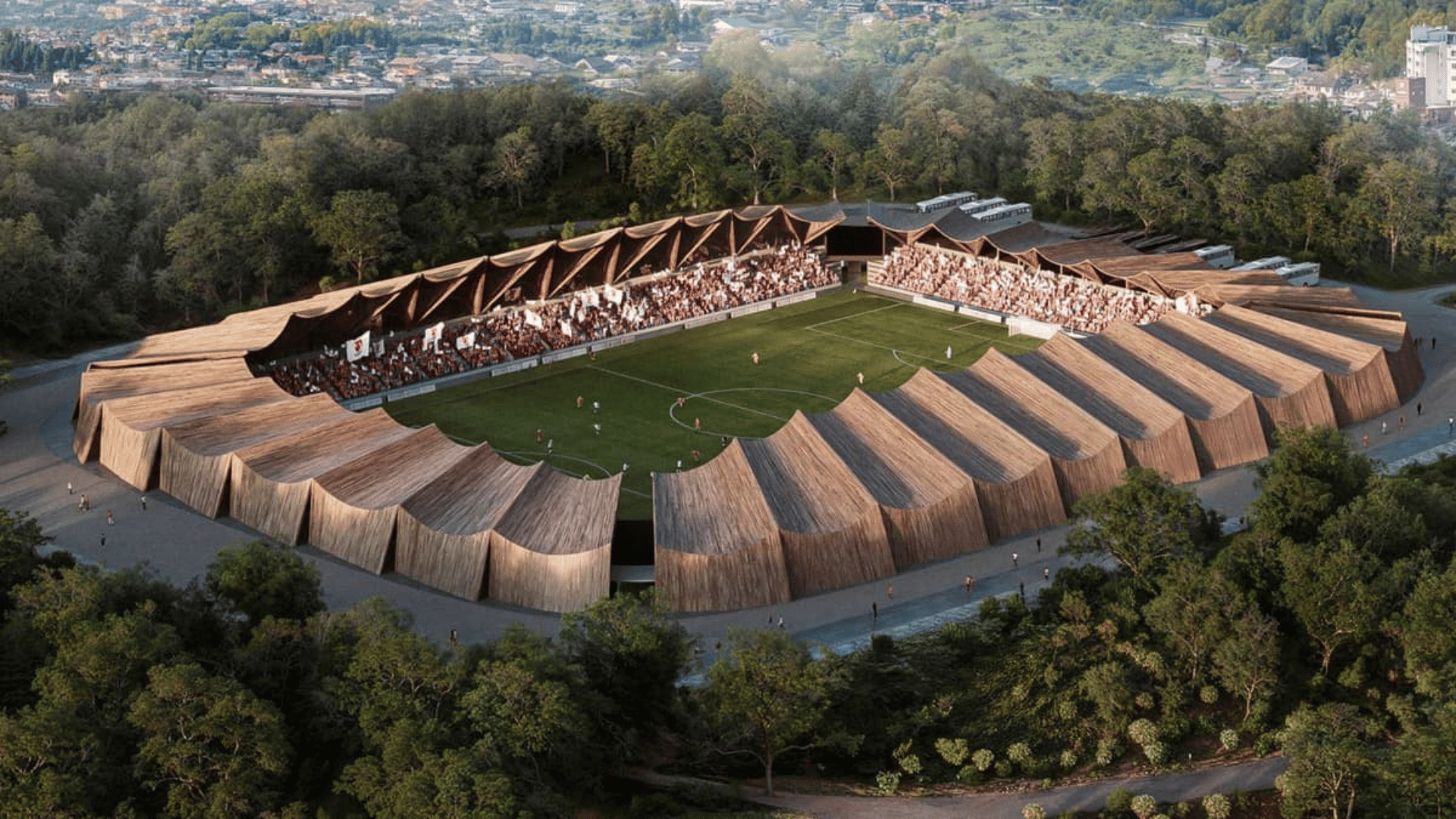Fukushima United FC has revealed plans for Japan’s first circular timber stadium. Located in Fukushima Prefecture, Japan, the 5,000-seat venue will set a new standard for innovative, community-focused, and sustainable architecture.
Circular Timber Stadium

“The stadium will be built using wood, with layers of lumber sourced from Fukushima Prefecture. Each component is designed to be disassembled and reused, promoting the recycling of local resources,” said the football club in a press release.
Designed in partnership with architecture startup VUILD, the structure is modeled on Japan’s tradition of Shikinen Sengu, a ritual rebuilding of shrines. The roof’s shape also reflects the steep thatched houses of Ōuchi-juku, a historic town in Fukushima.
According to Interesting Engineering, the structure uses hyperbolic paraboloid shells consisting of small cross-section timber members to achieve six-meter spans. These shells enable cantilevered roofs and long spans. Timber members in a catenary form are layered above the shell to create a triangular roof.
Rather than being concentrated in one large main stand, the design is divided into four sections, each with its own entrance. The stadium will be built using only timber from local forests. The structural framework will be constructed of laminated wood, with parts designed to be taken apart and reused. This allows materials to be cycled back into use in a circular model.
The team is also planning reforestation programs, woodworking education, and participatory construction to help regenerate skills and resources alongside the stadium. Emulating traditional Japanese timber-raising rituals, the construction process involves structural elements that are designed to be raised as a group.
Passive energy strategies are incorporated into the design to boost its environmental benefits. The roof is designed to both provide shade in the summer and shelter from winter winds. The facades allow a breeze in warmer weather and insulation in cooler weather. The stadium will also collect and reuse rainfall and stored snow for natural cooling during the summer.







